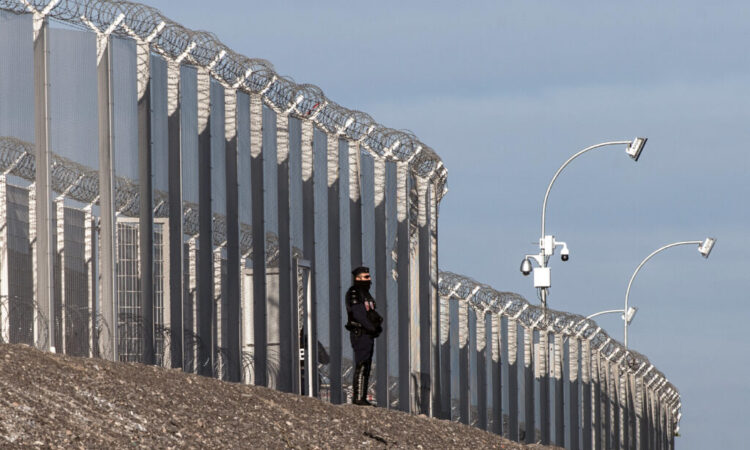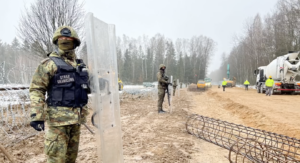
Brussels – It’s not walls, it’s not physical barriers, but the increase in EU funds for the management of the external borders of the Twenty-Seven – and therefore of the European Union itself – doesn’t mean that EU taxpayers’ money is not pushing the strengthening of border infrastructure, with major concerns about respect for the rights of migrants arriving at the Union’s borders. This is the finding of a study conducted jointly by the NGO networks European Council on Refugees and Exiles (ECRE) and Platform for International Cooperation on Undocumented Migrants (PICUM), also based on the 24 national programs of the Border and Visa Management Instrument (BMVI).

The BMVI is one of the two components of the Integrated Border Management Fund (IBMF), which replaced the former Internal Security Fund-Borders and Visas (ISF) and has experienced a 135 per cent increase from €3 billion (in the 2014-2020 multi-year budget) to €6.2 billion (in 2021-2027). More than half of the funds (59 per cent) are administered by member states through shared management, and the remaining 41 per cent by the EU Commission through a thematic instrument. The increase in resources has already been seen since the start of implementation in 2021, both through the interim review of the EU budget (which added €1 billion) and with the approval of the Migration and Asylum Pact (which will bring in at least €600 million per year for the solidarity pool from 2027), as well as €620 million in transfers from other Common Provisions Regulation funds. Of the €6.2 billion planned until 2027, member states have received €4 billion, which can already be quantified at +45 per cent over what they have received in seven years under the ISF.
“BMVI funding is being used for an increasingly complex and digitized system of border surveillance,” which is being exploited to deploy “an interconnected network of controls that harms people arriving at EU borders,” is the warning issued by ECRE and PICUM Policy Officer Chiara Catelli, author of the research Beyond Walls and Fences: EU funding used for a complex and digitized border surveillance system presented today (July 4). “The EU Commission’s refusal to allow the funding of walls and fences is a fig leaf to cover up other harmful measures that border funds can already support in the member states,” is the commentary about the issue that has become rather thorny on the term border “infrastructure” and the difference (more than technical, of interpretation of the Union’s founding Treaties in agreement with the majority in the European Parliament) on the issue of funding border barriers with EU funds.
How the growing EU funds are spent at external borders
The member countries with the largest increase in EU funds for external border management under the BMVI instrument are Latvia (+196 per cent), Greece (+171), Slovenia (+141), Germany (+103) and Sweden (+100), while with just over 350 million euros, Italy experienced an increase of 23.02 per cent. One-third of the national programs (35.66 per cent) is dedicated to strengthening infrastructure and equipment, that is, the renovation and creation of permanent surveillance buildings and infrastructure, “including in countries with a history of rejections or illegal detentions at the borders” and to increase controls with new technologies and artificial intelligence. Another third (36.3), however, is for developing and expanding databases and information systems that comprise the large-scale architecture of EU border crossings (EURODAC, European Travel Information and Authorization System, Schengen Information System).

The remaining funds will be spent on strengthening internal strategic and human resources (personnel costs, training, management of operations), but also on actions to support the development of Frontex, on assistance and protection of vulnerable persons arriving at external borders but also on investments in skill-building projects for border guards in third countries. For example, Austria intends to implement skill-building projects in both countries of origin and transit countries (such as Kosovo and Tunisia), Italy will organize training sessions for border guards from non-Schengen countries in Egypt, and the two member countries—along with Bulgaria, Finland, Romania, Slovenia, Spain, and Sweden—have planned activities and allocated expenditures for sending immigration liaison officers and border guards to third countries.
Among the most worrisome expenditure items for external borders recorded by the ECRE and PICUM study, several can be taken as examples of EU-funded financing of practices that could violate the rights of people arriving at the Union’s external borders, particularly with regard to surveillance technologies to be integrated with physical barriers. Such as Estonia, which will spend €2 million on mobile remote sensing systems to increase surveillance “where it is not economically feasible to build a permanent infrastructure,” or Poland, which intends to “reduce physical surveillance” by investing in light detection systems on guard towers, alarm systems, portable thermal and night vision devices. Croatia, Lithuania, Poland, and Spain are using EU funds to purchase sniffer dogs to chase people crossing their borders: in Croatia, the use of attack dogs has already been witnessed as part of illegal rejections at the border. Hungary, Greece, and Estonia will use drones and unmanned aircraft to expand aerial surveillance capabilities, while Croatia, Lithuania, Slovenia, and Spain are planning to purchase vehicles to transport migrants stopped at the border and deport them to neighbouring countries, so-called “informal readmissions” already ruled illegal also from the Rome court.
English version by the Translation Service of Withub






